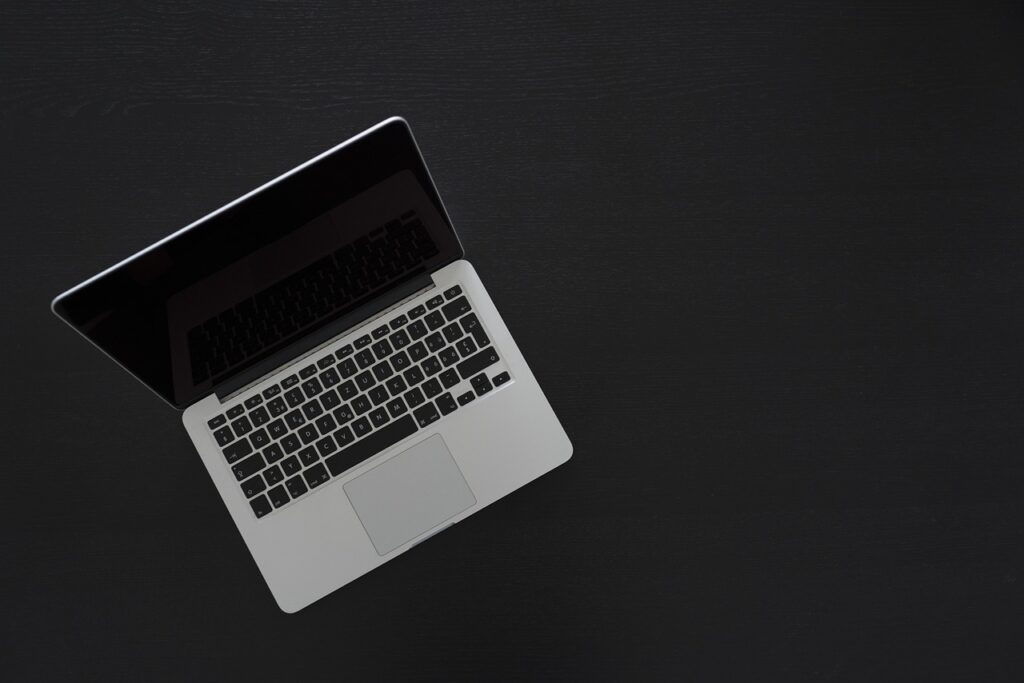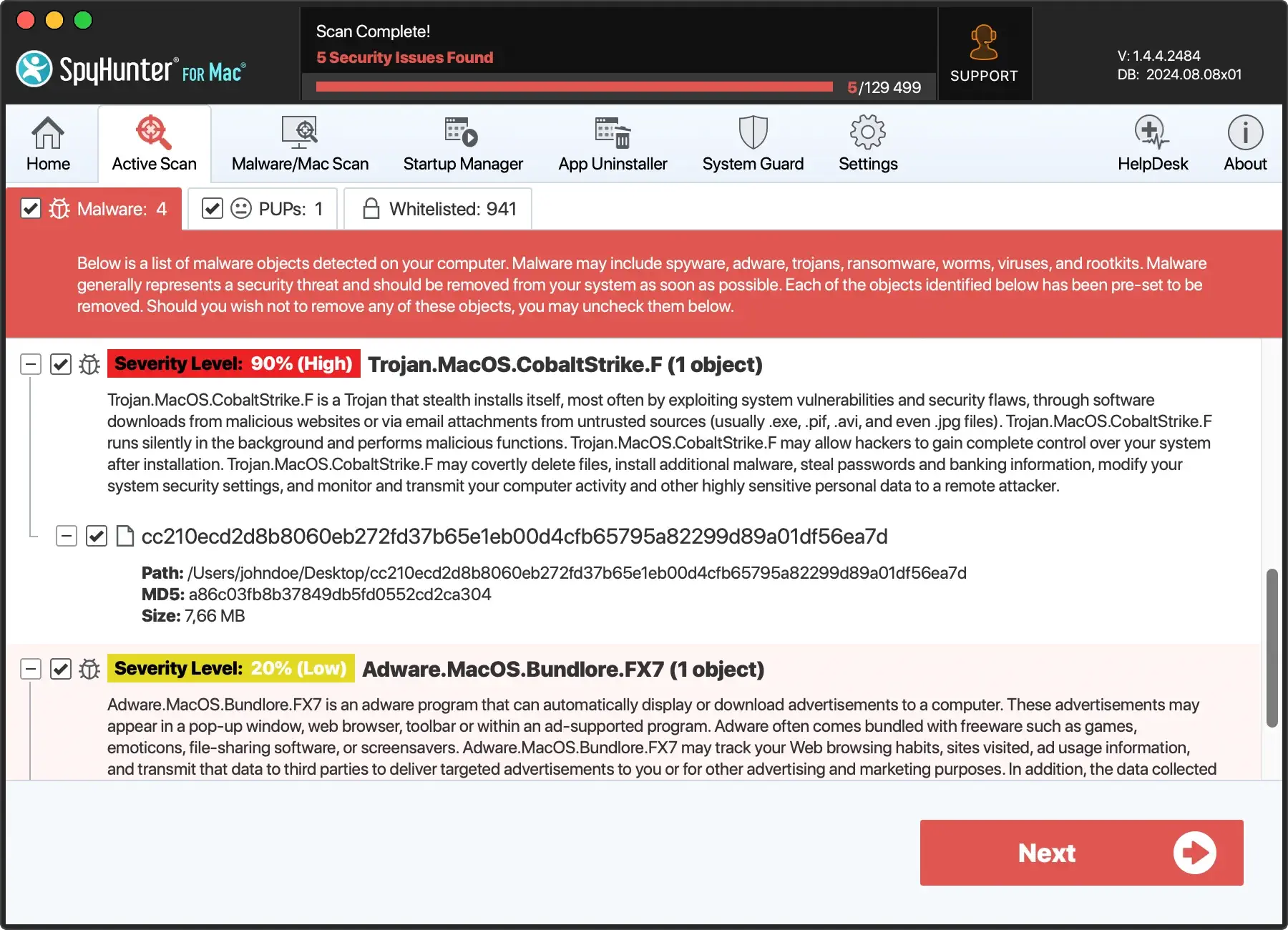How To Fix MacBook Sleep Mode Battery Drain Issue
Before we dive in
Before we dive in, let's make sure you stay safe online. We created SpyHunter because your security matters to us.
Protect your computer today — download SpyHunter right here! Check out our top tips below to keep your computer safe and secure.

Waking up to find your MacBook’s battery unexpectedly drained after a night in sleep mode can be a frustrating way to start the day. But what causes this unnerving battery depletion, and how can you prevent it?
Whether you’re dealing with unexpected wake-ups or just looking to optimize battery life, let’s look into your Mac’s battery maintenance and explore tips to help you extend your laptop’s working hours.
What causes MacBook battery drain in sleep mode?
While a new power adapter, dimming your screen brightness, or using low power mode can help with power management during normal work, significant battery drain during sleep mode is a different sort of issue.
Your Mac draining battery while sleeping is definitely a big frustration. Several underlying factors could cause MacBook’s battery to drain even when it’s in sleep mode.
- Energy-intensive apps running in the background: Some applications continue to run in the background, even when your MacBook is in sleep mode. These can include apps that sync data online, perform updates, or execute background processes.
- Power nap feature: This feature allows your MacBook to update emails, notifications, and calendar events while in sleep mode. While useful, it can also be a drain on your battery if left enabled.
- Connected peripherals: Devices connected to your MacBook, such as external hard drives, mice, and keyboards, can draw power from your MacBook’s battery even when not in use.
- Network activity: If your MacBook is set to wake for network access, it can come out of sleep mode to check for network requests, leading to additional battery drain.
- Malware: Malicious software can cause unusual activity on your Mac without your knowledge. This includes executing tasks that drain battery life even in sleep mode.

Addressing these areas can minimize battery drain and maximize your MacBook’s efficiency during sleep mode.
Top ways to stop your MacBook’s overnight battery drain
There are effective solutions to minimize how much your Mac battery drains in sleep mode. Let’s explore the top ways to conserve battery power and keep your MacBook charged and ready for your day.
Adjust Energy Saver settings for optimal performance
These settings are designed to manage how your computer uses energy, making it possible to extend your Mac battery life significantly. Here is how you can adjust these settings for better performance:
- Open
System Settings(orSystem Preferenceson older macOS versions) and navigate to theBatterysection. - Select
Energy SaverorBattery Healthdepending on your macOS version. - Adjust the slider for
Turn display off afterto a shorter time to reduce energy consumption when not actively using your MacBook. - Check the box for
Put hard disks to sleep when possibleto save even more power. - Consider enabling
Slightly dim the display while on battery powerto further reduce energy use.
By fine-tuning these settings, you can significantly reduce your MacBook battery draining, ensuring it retains more charge overnight.
Disconnect peripherals to save power
Peripherals such as external hard drives, mice, and keyboards can continue to draw power from your MacBook, even when it’s in sleep mode. Disconnecting them when they’re not in use, especially overnight, can save significant amounts of battery power. Here’s a simple approach to managing your peripherals:
- Before putting your MacBook to sleep, unplug any USB devices that are not essential.
- Disable Bluetooth if you’re not using wireless devices, as this can also save battery.
- Remember, devices like smartphones charging through your MacBook’s ports can also drain the battery.
By disconnecting peripherals and turning off Bluetooth when not needed, you can prevent unnecessary battery drain and maintain a higher charge level overnight.
Why Power Nap might be draining your MacBook’s battery
Power Nap is a clever feature in macOS that allows your MacBook to update emails, calendars, and other iCloud-related services while it sleeps. However, this convenience comes at the cost of battery life since your MacBook must power these activities.
If you find your battery is consistently low after periods of sleep, consider disabling Power Nap with these steps:
- Access
System Settingsand navigate to theBatterysection. - Find the
OptionsorBattery Healtharea and look for theEnable Power Napoption. - If it’s checked, simply uncheck this option to disable
Power Nap.
Note that this feature is not available on all Macs, so don’t worry if you can’t find it.
Update macOS to latest version for efficiency improvements
Keeping your MacBook updated to the latest version of macOS can lead to significant improvements in how your battery is used and preserved, especially overnight.
Here’s how to ensure your macOS is up-to-date:
- Click the Apple menu and choose
About This Mac. - Go to the
Software Updatesection. - If updates are available, follow the prompts to install them.
Utilizing built-in tools to combat sleep mode battery drain
Built-in tools on your MacBook can provide straightforward solutions to identify and mitigate the causes of this problem. By leveraging these utilities, you can extend your battery’s life and improve the overall performance of your MacBook.
Check Activity Monitor for Energy-Hungry Apps
The Activity Monitor tool on your Mac serves as a window into how your system’s resources are being used, enabling you to spot potential culprits behind battery drain.
- Open Activity Monitor using Spotlight search or the Launchpad.
- Once open, click on the
% CPUcolumn to sort applications and processes by the amount of CPU they are using, from highest to lowest. - Identify apps or processes that are using a lot of CPU. These are likely contributing to your battery drain and may need to be closed.
- To close an app or process, simply click on it to highlight, then press the
[X]button at the top of theActivity Monitorwindow. - Additionally, review the
Idle Wake Upscolumn to identify processes that might be waking your MacBook from sleep mode unnecessarily.
While closing high-CPU-utilizing apps can help, exercise caution. Avoid closing system processes which are essential for your Mac’s operation. If you’re unsure about terminating a process, a quick internet search can provide guidance.
Assess battery condition and health on your MacBook
Even if no particular apps or processes are causing the drain, the issue might be with the battery itself.
Checking the condition and health of your MacBook’s battery is a straightforward process, providing insight into its current state and potential need for service.
- Open
System Settingsand navigate to theBatterysection to get started. - In the
Batterysection, selectBattery Healthto view the status of your battery. - A status of
Normalindicates that your battery is healthy and not the cause of your sleep mode battery drain. Conversely, if you seeService Recommended, your battery may be failing and in need of replacement due to poor battery health.
A healthy battery should not deplete quickly in sleep mode. If you’ve addressed potential software issues and your battery’s health appears normal, yet the problem persists, you might be dealing with energy-draining malware.
Could malware be draining your MacBook’s battery?
While many factors can contribute to battery drain, one potential culprit often overlooked is malware.
Malware, including viruses, Trojans, and adware, can significantly impact your MacBook’s energy efficiency. These malicious programs can run undetected in the background, consuming resources and thereby reducing your battery life.
Unlike visible, resource-heavy applications that you can close to save battery, malware works stealthily, making it harder to identify and eliminate its effects on your MacBook’s performance.
To determine if malware is behind your battery issues, look for unexplained high CPU usage, unusual adverts popping up, or your MacBook heating up even when it’s supposed to be in sleep mode.
These signs could indicate the presence of unwanted software working in the background. Regularly scanning your MacBook for malware can help you catch and remove these energy-draining nuisances before they take a toll on your battery life.
Protect your MacBook with SpyHunter
Securing your MacBook from malware requires a reliable and powerful tool. SpyHunter is an advanced malware protection and removal tool specifically designed to tackle the unique threats faced by Mac users.
With its comprehensive approach to cybersecurity, SpyHunter scans your system for malware that could be draining your MacBook’s battery. Its intuitive interface makes it simple for users to perform regular checks.
In addition to detecting and removing malware, SpyHunter offers real-time protection to prevent new infections.

This means that SpyHunter is not only cleaning up current issues but also helping to prevent future ones, thereby maintaining your MacBook’s battery life and overall health.
The software is continually updated to address the latest malware threats, offering peace of mind and enhanced security for your Mac.
Download SpyHunter to try all the features SpyHunter offers and enjoy an additional layer of security.
Personalize notifications to minimize battery usage
With the convenience of staying connected comes the hidden cost of MacBook battery life, especially when dealing with MacBooks in sleep mode.
While notifications ensure we miss nothing, they can be a significant drain on our laptops when we least expect it.
Firstly, tailoring your MacBook’s notification settings can dramatically conserve battery life. This step is crucial for those who wish to balance staying informed with maintaining optimal battery health.
The process to personalize notifications is straightforward and yields immediate benefits, ensuring your MacBook only expends energy on the most critical updates.
- Access notifications settings: Begin by navigating to
System Settings, then selectNotifications. This section is the command center for managing how and when your MacBook delivers alerts. - Disable sleep notifications: Look for the option labeled
Allow notifications when the display is sleepingand toggle it off. This action prevents your MacBook from waking the screen for alerts during sleep mode. - Review application notifications: Go through each app and decide which truly needs to interrupt your day. It’s often surprising how many notifications we receive that don’t require immediate attention. Adjust these settings to reduce the frequency of alerts.
- Consider time-based alerts: Some applications offer settings to control notification delivery times. If possible, limit work-related notifications to active hours and mute social updates during certain times to prevent your MacBook from waking up needlessly.
This personalized approach to managing notifications does more than just extend battery life; it creates a more focused and less interruptive computing experience.
Wrap-up
In conclusion, addressing the issue of your laptop Mac’s (whether it is a MacBook or MacBook Air) excessive battery drain in sleep mode involves a combination of maintenance and optimization strategies.
Ensuring that both software and hardware are functioning optimally is crucial. Regular updates and proper system configurations play a significant role in minimizing unnecessary power consumption.
By staying vigilant and proactive, you can effectively enhance your MacBook’s battery performance during sleep mode.